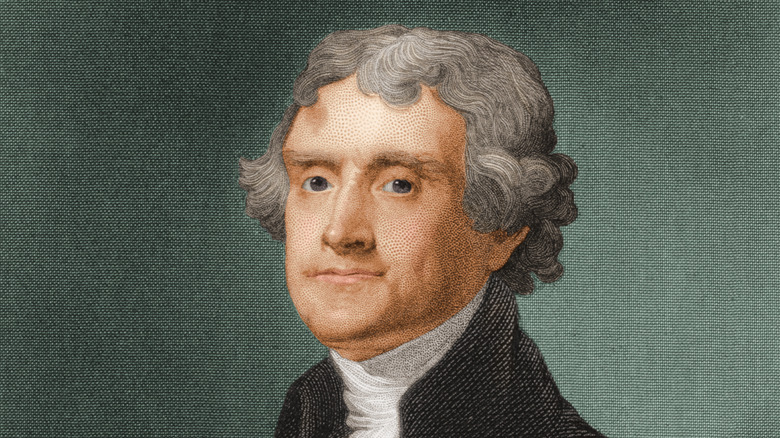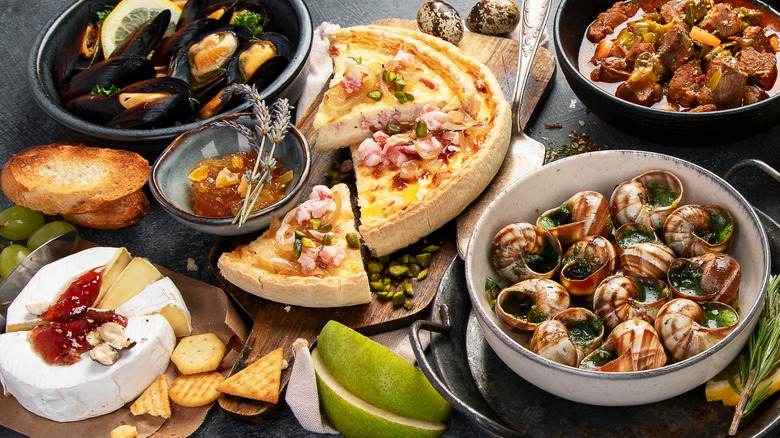President Thomas Jefferson's Favorite Cuisine Is Still Considered One Of The Best In The World
From August 1784 to September 1789, Thomas Jefferson lived in Paris, France, where he was stationed as the United States Minister to France. He adored his life there, absorbing the music, architecture, and especially the food. While he certainly embraced the French way of life, cooking, and eating, he traveled extensively around Europe, always sampling the local cuisine. When it was time to go home to Virginia, Jefferson shipped an enormous amount of food and equipment from Europe, including hundreds of bottles of wine, copper cookware, a pasta maker, olive oils, cheeses, nuts, and fruits. But after all his travels, it was the foods of France that he preferred over all others.
Food Timeline documents his love of French cuisine, which he said was in part, "because the meats were more tender." He enjoyed the country's wide variety of fruits and vegetables, even keeping a chart of what foods were in season while in France. Back at his Monticello home in Virginia, Jefferson even saturated his gardens with seeds and plants he brought with him from France. When he entertained there and at the White House upon becoming President, he did so in the Parisian, nouvelle cuisine fashion, with multiple dishes, and guests serving themselves.
Jefferson was undoubtedly one of America's first "foodies," taking a particular interest in food in general, but being enraptured by what the French were doing in the kitchen. Hundreds of years later, people still recognize French cuisine as one of the world's best. While the subject of the best food in the world is impossibly subjective, it's fair to say that France has been the most influential when it comes to food.
French cuisine has had a major influence in the food world
France has given the world such delights as the baguette, brie, the croissant, steak with fries, cheese with French onion soup, quiche Lorraine, crepes, and the soufflé. It is the birthplace of the Michelin dining guide and the home of Antonin Carême, the first "celebrity chef," and August Escoffier, who gave the culinary world things like the five mother sauces, the concept of the kitchen prep step of mise-en-place, and the professional kitchen brigade system. Restaurants became the primary way to develop French cuisine post-Revolution. Even some cooking techniques, like confit, are French in origin. You simply can't deny the contributions France has given to the food realm, which is perhaps why the cuisine dazzled Thomas Jefferson and still attracts those looking for exceptional dining experiences.
French fine dining often involves absolute precision in preparation, flavor, and presentation. It remains highly respected even in the modern age, when food from around the globe is available like never before, and has introduced people to an endless array of flavors and textures. But French food isn't just about hoity-toity haute cuisine. It's highly approachable even for those of us who don't have the budget for dinner at a 3-Michelin-star eatery. Cassoulet, coq au vin, ratatouille, and pot au feu are the epitome of delicious French food that won't break the bank. Perhaps this is why it's still widely lauded, even for those who prefer the dishes from Italy, China, Greece, India, Thailand, Mexico, or anywhere else on the planet.

